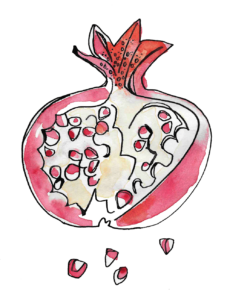by Curtis Strohl
Years ago, after relocating to Napa, my wife and I joined a local CSA (Community Supported Agriculture) farm program. At the beginning of the season, we paid a fixed fee to join, and then each week we were able to pick up a box of fresh produce.
At the time, this was a new experience for us. Although I considered myself an accomplished home chef, I was accustomed to working mostly with store-bought produce, supplemented by summer herbs and tomatoes from a small garden. So, like most Americans today, I was used to choosing what I wanted to cook with and then purchasing my list from the store. Choice was, frankly, something that I largely took for granted.
In joining the CSA, we opted to limit our choices somewhat. As we had only just moved to the area, we really had no idea what would be coming in season. In fact, we joined in autumn. We had moved here from Milwaukee, Wisconsin, so the thought of getting fresh local produce as the year waned and the days grew shorter and colder was itself a novelty.
For the first few weeks, this was a fun challenge, a great way to get to know our new home and its seasons. Then the leafy green vegetables started coming. And coming. And coming. Kale, spinach, collards and chard. I had hardly ever cooked with these greens before — maybe a couple of times with spinach. That may sound odd today, when kale salad is a staple on trendy menus, but 10 years ago, kale and its cousins were still waiting to break out and were new to me.
I got out the cookbooks and read up on how to cook kale. And I loved it. Fast-forward to today when I cannot get enough. I look forward to the cooler autumn days and the coming rains, knowing that greens will be everywhere in the market. If I don’t eat leafy green vegetables of some kind for a week, I begin to crave their bitter goodness.
It may seem obvious that more choice is better than less. Consumer culture makes us think that we are in charge of our destiny, and that happiness is just a purchase away. Farmers, of course, have always known that this is naive, that nature influences our destiny, as do the cyclical movements of the seasons. In giving up choice, I learned about something that I never would have chosen on my own. I found that my own understanding of food and cooking and eating grew in a way that I could not have engineered.
Today, my choice is to show up at the Napa Farmers Market without a list of ingredients and to let the harvest help me create a sensational menu for the week ahead. I let my eyes and nose and my imagination guide me as I choose old favorites and new surprises to fill my bag. The bounty goes beyond what I would choose at the store.
The Napa Farmers Market is now open year-round, allowing you to purchase fresh from local farmers every Saturday all year. Leave your shopping list at home and come be inspired by the constantly changing selection of fruits and vegetables at the market.
How to Cook Kale (and Other Leafy Greens)
Kale and other leafy greens such as chard, spinach and collards have a bitter flavor tinged with natural sweetness. They are inexpensive, easy to cook and full of flavor and nutrients. They cook down to a fraction of their starting weight and volume, so buy a lot. A typical head of kale or chard might feed only two adults.
Fresh greens
Extra virgin olive oil
1 tablespoon lemon juice
Soy sauce
Clean and destem the greens. (If I have time, I prefer to split the stems or cut them in small pieces and cook them as well. If not, I put them in the compost or feed them to our chickens.) Divide greens into thirds.
Add enough oil to just cover the bottom of the pan and put the pan over medium-low heat. Add garlic and cook until tender and aromatic.
If you are cooking the stems, add now and cook over medium-low heat for 10 to 15 minutes. The stems will intensify the flavor of the dish.
Add one-third of the greens. Once they begin to wilt, add the next third and then the final third. Adding in stages will yield a dish with more interesting texture. The first greens added will be the softest, and the last greens added will be fresher.
Add lemon juice and a few splashes of soy sauce. Turn the greens with tongs until they are soft but still bright green. Serve immediately.
Variations: You can also sear the greens over high heat, scorching them slightly for a charred flavor. Or you can simmer them over low heat in a covered pan, producing a soft and creamy texture.
Curtis Strohl is the general manager of B Cellars in Oakville and a member of the Napa Farmers Market board of directors.

